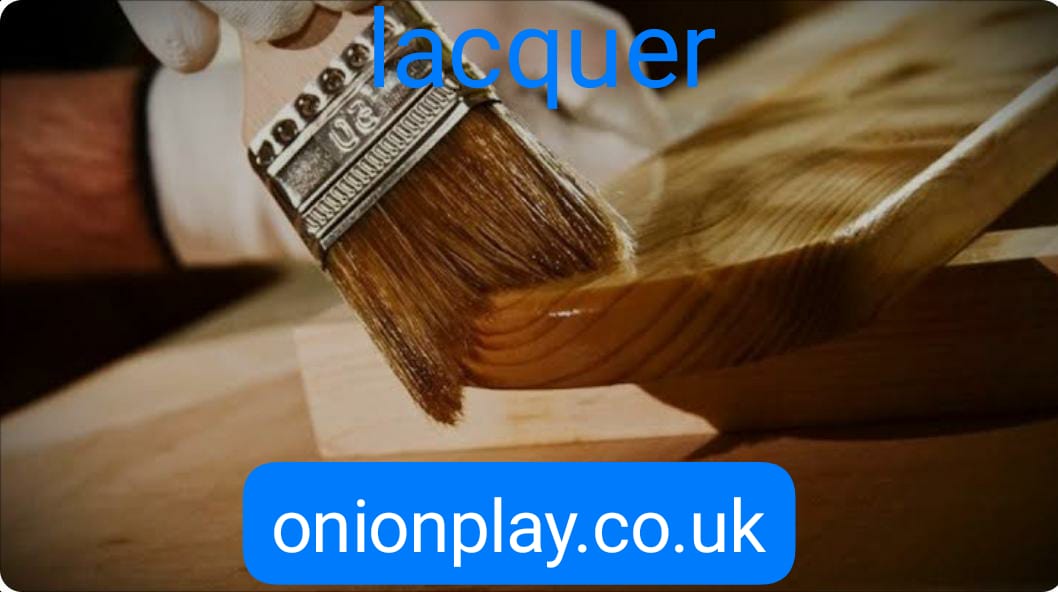Lacquer, a term that evokes images of smooth, glossy surfaces and intricate designs, is a substance and a technique with a rich history and wide array of applications. Originating from the sap of lacquer trees, this versatile material has been utilized for centuries in various cultures to create both practical and decorative objects. This article delves into the fascinating world of lacquer, exploring its history, composition, applications, and the intricate craftsmanship involved in its use.
The Origins and History of Lacquer
The use of lacquer dates back thousands of years, with evidence of its application found in ancient China, Japan, Korea, and other parts of Asia. The earliest known use of lacquer can be traced to China around 5000 BCE. Chinese artisans discovered that the sap from the lacquer tree, Rhus verniciflua, could be processed and applied to surfaces, creating a durable and aesthetically pleasing finish.
In Japan, the art of lacquerware, known as “urushi,” flourished during the Jomon period (circa 14,000–300 BCE). Japanese craftsmen refined the techniques of applying and polishing lacquer, producing exquisite pieces that were not only functional but also highly decorative. Korean lacquerware, or “otchil,” also boasts a long tradition, with its own unique styles and methods.

Composition and Properties of Lacquer
Lacquer is derived from the sap of the lacquer tree, which contains a compound called urushiol. This sap is collected and then processed to remove impurities. The resulting substance is a viscous liquid that hardens upon exposure to air. The chemical reaction that occurs during this hardening process gives lacquer its characteristic durability and glossy finish.
Lacquer has several notable properties:
- Durability: Once hardened, lacquer forms a tough, resilient coating that is resistant to moisture, heat, and certain chemicals.
- Aesthetic Appeal: Lacquer provides a deep, rich gloss that enhances the visual appeal of the coated object. It can be tinted with pigments to produce various colors and finishes.
- Versatility: Lacquer can be applied to a wide range of materials, including wood, metal, ceramic, and even fabric.
The Lacquering Process
The process of lacquering involves multiple steps, each requiring precision and skill. Here is an overview of the traditional method:
- Preparation: The surface to be lacquered is meticulously cleaned and smoothed. For wooden objects, this may involve sanding and applying a base coat to seal the wood.
- Application: Lacquer is applied in thin layers using brushes or cloth pads. Each layer must be allowed to dry and harden before the next is applied.
- Polishing: Once several layers have been applied, the surface is polished to achieve a smooth, glossy finish. This can be done by hand using fine abrasives and polishing compounds.
- Decoration: Intricate designs can be added to the lacquered surface using techniques such as inlay, carving, or painting. These decorative elements are often highlighted with gold or silver leaf.
Applications of Lacquer
Lacquer has been used for a wide range of applications, from everyday household items to high art. Some of the most common uses include:
- Furniture: Lacquered furniture, such as cabinets, tables, and chairs, is highly prized for its beauty and durability. The smooth, glossy finish enhances the natural grain of the wood and adds a touch of elegance to any room.
- Art and Collectibles: Lacquerware items, such as boxes, trays, and vases, are popular collectibles. These pieces often feature intricate designs and are considered valuable works of art.
- Musical Instruments: Certain musical instruments, like guitars and violins, are finished with lacquer to protect the wood and enhance the instrument’s sound quality.
- Automotive: Lacquer finishes are also used in the automotive industry to give cars a high-gloss, durable finish.

Lacquer in Contemporary Design
While traditional lacquer techniques continue to be practiced, contemporary designers and artists are also exploring new ways to use lacquer. Modern technologies and materials have expanded the possibilities for lacquer finishes, allowing for innovative applications in interior design, fashion, and even electronics.
Caring for Lacquered Items
To maintain the beauty and longevity of lacquered items, proper care is essential. Here are some tips for caring for lacquerware:
- Avoid Direct Sunlight: Prolonged exposure to sunlight can cause lacquer to fade or discolor.
- Keep Away from Heat and Moisture: Extreme temperatures and high humidity can damage the lacquer finish.
- Use Gentle Cleaning Methods: Wipe lacquered surfaces with a soft, damp cloth. Avoid using harsh chemicals or abrasive materials.
- Regular Maintenance: Periodically apply a thin layer of wax or polish to maintain the glossy finish and protect the lacquer.
Conclusion
Lacquer is a testament to the ingenuity and craftsmanship of ancient cultures. Its enduring appeal lies in its combination of beauty and functionality. Whether used in traditional lacquerware or modern design, lacquer continues to captivate with its rich history and timeless elegance. As artisans and designers push the boundaries of what can be achieved with lacquer, this ancient art form remains as relevant and inspiring as ever.
Also read this;dordon
